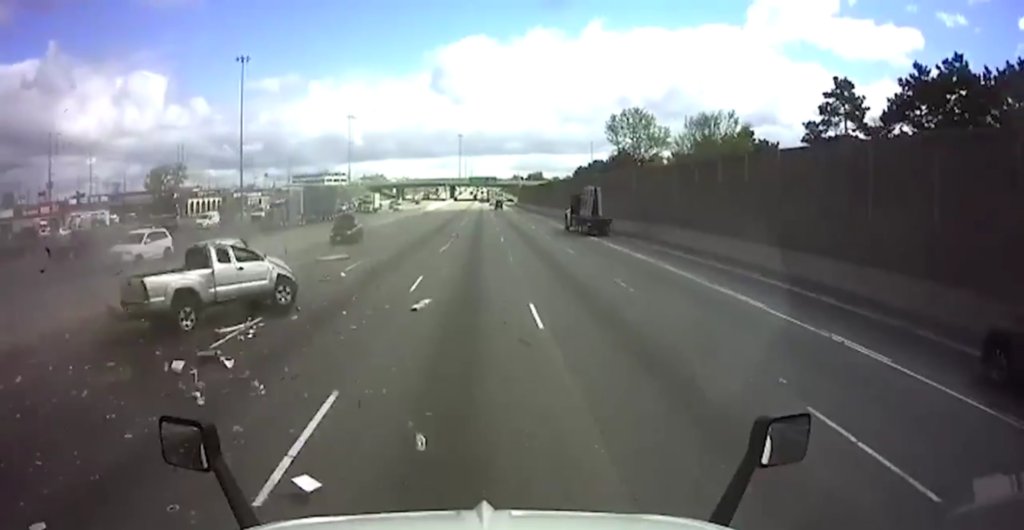Dash cam crime solvers
Truck drivers and fleets began equipping their vehicles with dash cams initially to protect themselves. In some cases, the footage captured by these cameras is assisting law enforcement in conducting accident investigations the truck driver wasn’t even involved in.
A Kriska Transportation Group driver was recently traveling on Hwy. 401 when he captured sensational footage of a reckless driver darting between lanes before creating an enormous rollover crash.
“It happened directly in front of him,” Guy Broderick, safety and training supervisor with Kriska said in an interview.
The professional driver checked on occupants of the two vehicles involved. When police arrived on the scene called Kriska to let them know what had happened.
“We told him he’s blocking traffic so to get out of the way,” Broderick said. The safety department then contacted Isaac Instruments to request footage of the incident. When Broderick called Sgt. Kerry Schmidt of the OPP, and offered up the footage, the officer was delighted. Without video, it was difficult to determine who was at fault. Following receipt of the video, the car driver at fault was charged.

Some in-cab cameras are always rolling, some are triggered by events such as a crash or hard braking incident. With some systems, a driver must press a button to capture footage if there was no outside trigger. It raises questions as to what the best procedure is for drivers who capture footage of an accident they weren’t involved in. Should fleets have policies in place so drivers know what to do?
At Kriska, the policy is to get to a safe location as soon as possible then to have the safety department request the footage from telematics provider Isaac Instruments and forward to police.
Leaving the crash scene as soon as possible reduces the risk of a pileup.
“The last thing you want to do is have another accident,” Broderick says.
Camera manufacturer Lytx told Today’s Trucking the footage belongs to the fleet, so it’s really their decision.
The incident described above wasn’t the first time a Kriska driver’s dash cam has been witness to an accident, nor was it the last.
“The very next week we had two more incidences where things happened directly in front of our trucks,” Broderick said.
In both cases, the safety department retrieved the damning video and contacted the local law enforcement agency that investigated the collisions. In each incident Broderick said the police were pleased to receive the video. The motorists at fault, presumably not so much.
Have your say
This is a moderated forum. Comments will no longer be published unless they are accompanied by a first and last name and a verifiable email address. (Today's Trucking will not publish or share the email address.) Profane language and content deemed to be libelous, racist, or threatening in nature will not be published under any circumstances.
Dash cams are fine when they’re facing forward but it’s a privacy act when the camera is facing the driver and watching what the driver is doing in the cab. That is not right. The more you micromanage the drivers the less drivers you’ll have. A lot more short of truck drivers in five years, it’s sad to say. Like I always say leave us alone, we are the professionals.